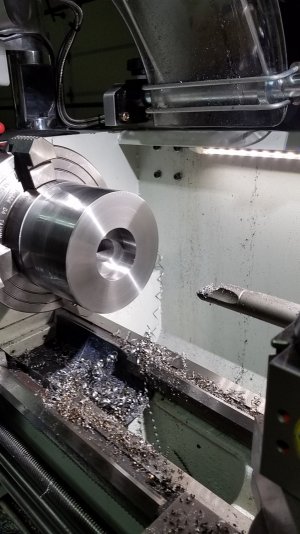- Joined
- Jun 12, 2014
- Messages
- 4,817
My experience with 1018 is it basically it is harder to turn, let alone get a decent finish, the 8620 was much easier and also able to break the swarf. The 4130/4140 needed higher feed rate and DOC to get a decent finish and it was a rats nest of swarf. Have to push the cutting very hard to break the chips. The 8620 was much more manageable as to swarf and finish, turns easier then 1144 in my experience, and anything is better than 1018.
Boring 8620.

Boring 8620.


